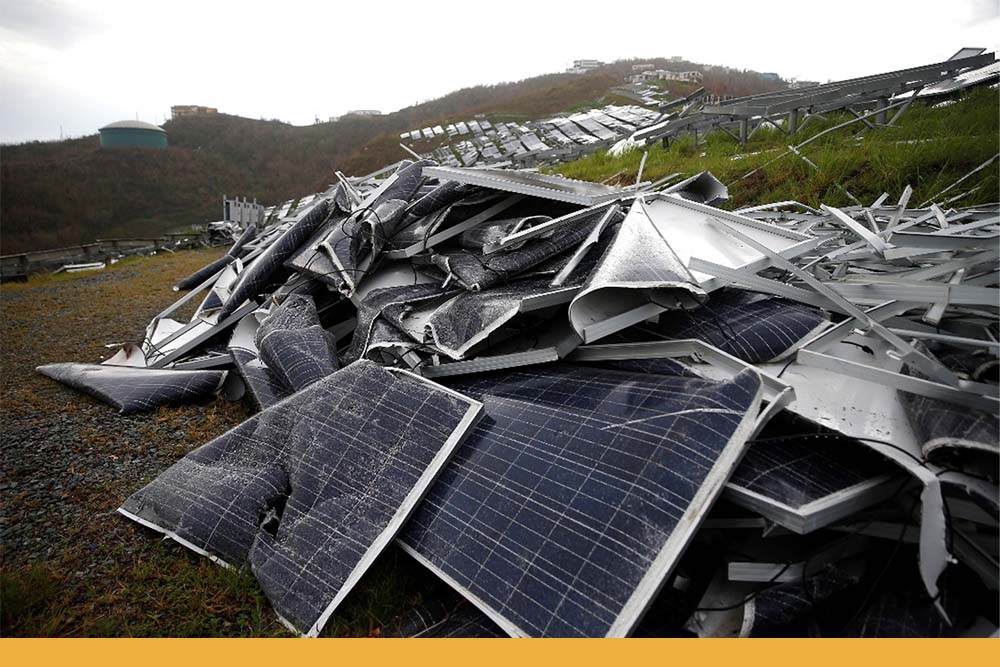So, you’re wondering if solar power systems can actually be recycled, huh? Well, the answer is yes! As our quest for renewable energy continues, it’s important to consider the end-life of these solar panels. While they may provide clean energy for years, eventually they do reach their limit. But fear not, because recycling solar power systems is not only possible but increasingly feasible. In fact, the technology and infrastructure to recycle solar panels is already in place, and more companies are embracing this eco-friendly practice. So, let’s dive into this article and find out just how solar power systems can be recycled and the benefits it brings to our planet. Solar power systems have grown increasingly popular in recent years, thanks to their ability to harness the sun’s energy and provide clean and renewable electricity. As more and more individuals, businesses, and governments embrace solar power, it is important to consider the environmental impact of the waste generated by these systems and the need for proper recycling methods. This article aims to explore the importance of solar power system recycling and the various components, challenges, current state, and future innovations in the recycling process. Additionally, it will discuss the role of manufacturers and industry, the economic viability of recycling, and best practices for responsible end-of-life management. By understanding the importance of solar power system recycling and taking action, we can contribute to a sustainable future and minimize the negative environmental consequences of solar waste.
The growing popularity of solar power systems
Solar power systems have experienced a significant surge in popularity over the past decade. The increasing awareness of climate change and the need for clean energy alternatives have led many individuals and organizations to invest in solar panel installations. Solar power offers numerous benefits, including reduced electricity bills, energy independence, and a smaller carbon footprint. As a result, the installation of solar power systems has become one of the fastest-growing renewable energy sources globally. However, with this rapid growth comes the challenge of managing the end-of-life stage of these systems, making recycling an essential consideration.
The environmental impact of solar power system waste
While solar power systems provide significant environmental benefits during their operational lifetime, they also generate waste that can harm the environment if not handled properly. The main components of solar power systems include solar panels, inverters, racking and frames, battery storage systems, and wiring and connectors. These components contain valuable and potentially hazardous materials that, if not recycled, can end up in landfills or be incinerated, leading to environmental pollution and resource depletion. Therefore, understanding the environmental impact of solar power system waste is crucial in developing solutions for responsible disposal and recycling.
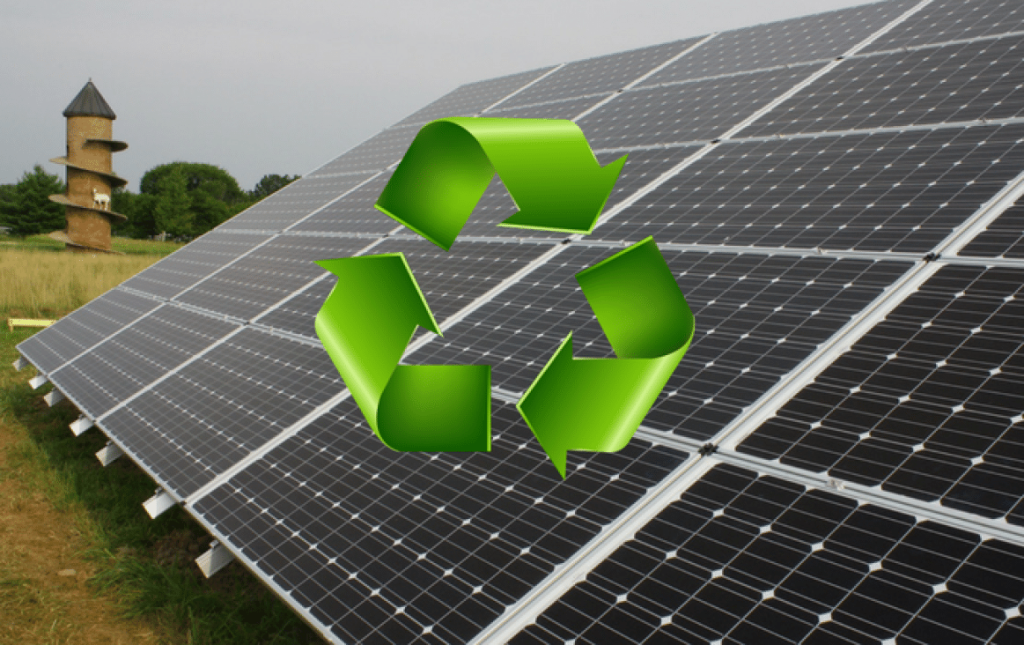
The need for proper recycling methods
Proper recycling methods for solar power systems are essential to address the environmental impact of waste, recover valuable materials, and promote a circular economy. Unfortunately, there are several challenges in the recycling process, including the complexity of solar panel recycling, lack of standardized processes, the volume of waste generated, and contaminants in the components. These challenges make it critical to develop efficient and sustainable recycling methods that can effectively handle the increasing number of retired solar power systems. By implementing proper recycling methods, we can harness the potential of solar power while minimizing its negative impact on the environment.
Understanding Solar Power System Components
To better comprehend the challenges and importance of recycling solar power systems, it is necessary to understand their various components. Solar power systems consist of several key elements, including solar panels, inverters, racking and frames, battery storage systems, and wiring and connectors. Each component plays a vital role in harnessing and utilizing solar energy efficiently.
Solar panels
Solar panels are the heart of any solar power system. They are responsible for converting sunlight into electricity through the photovoltaic effect. Solar panels consist of multiple solar cells made from semiconductor materials, typically silicon. These cells are interconnected and encapsulated within a protective and durable glass or polymer frame. Solar panels can have a lifespan of 25 to 30 years, after which they may become less efficient or damaged, requiring proper recycling.
Inverters
Inverters are essential components of solar power systems that convert the direct current (DC) electricity produced by solar panels into alternating current (AC) electricity suitable for use in homes or businesses. Inverters also monitor and optimize the performance of the solar power system. While inverters typically have a shorter lifespan compared to solar panels, they still require appropriate recycling to recover valuable materials and minimize their environmental impact.
Racking and frames
Racking and frames are the structural components that support and hold solar panels in place. They are typically made from metals such as aluminum or steel to provide durability and resistance to environmental conditions. Although racking and frames may not contain as many valuable materials as solar panels or inverters, they still contribute to the overall waste generated by solar power systems and should be properly recycled.
Battery storage systems
Battery storage systems are becoming increasingly common in solar power installations, allowing for the storage of excess electricity generated during the day for use during non-sunlight hours. These systems are composed of rechargeable batteries that can store and discharge electrical energy as needed. Recycling battery storage systems is crucial to recover valuable materials like lithium, cobalt, and nickel while preventing the release of harmful components into the environment.
Wiring and connectors
Wiring and connectors are the backbone of solar power systems, ensuring proper electrical connections between the various components. These components are typically made from copper or aluminum and are crucial for the efficient and safe operation of the system. While wiring and connectors may not be as complex to recycle as other components, they still require appropriate handling and disposal to prevent environmental contamination.
By understanding the different components of solar power systems, we can better appreciate the intricate nature of recycling these systems and the importance of proper disposal methods. Each component contains valuable materials that can be recovered through recycling, reducing the reliance on virgin resources and minimizing the environmental impact of solar power system waste.
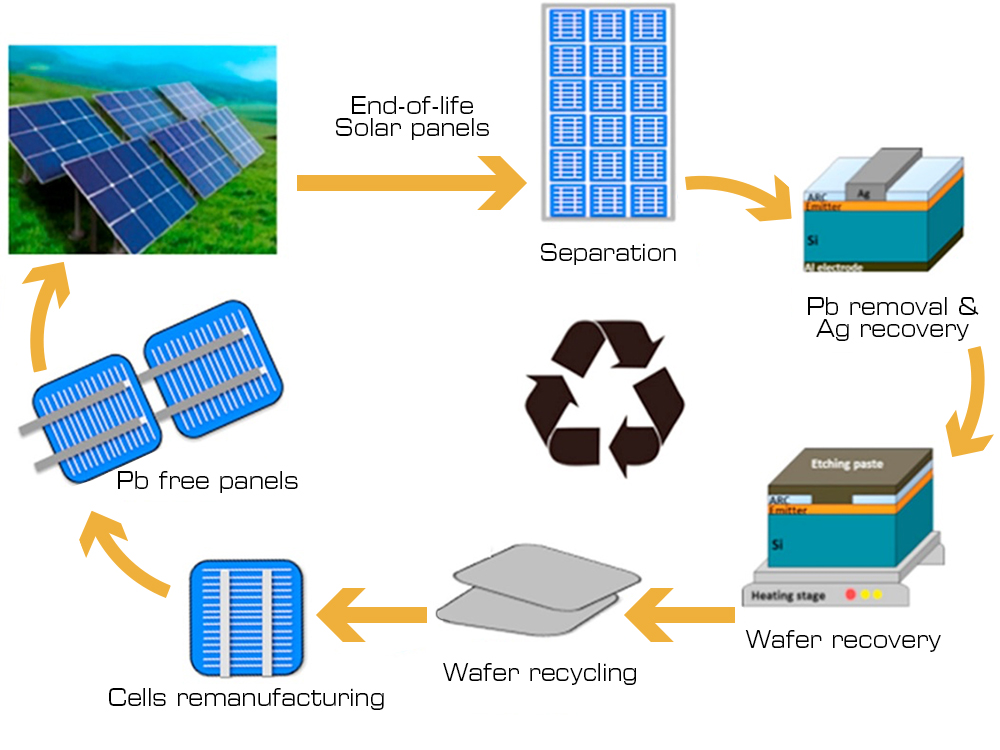
Challenges in Recycling Solar Power Systems
Recycling solar power systems presents several challenges that must be overcome to ensure effective and sustainable waste management. Some of the key challenges include the complexity of solar panel recycling, the lack of standardized recycling processes, the volume of waste generated, and contaminants in solar power system components.
Complexity of solar panel recycling
Solar panels are complex devices composed of multiple materials, including glass, metals, plastics, and various semiconductor materials. These materials must be separated and processed to recover valuable components such as silicon, silver, aluminum, and copper. However, the intricate design and construction of solar panels make the recycling process technically challenging and require specialized equipment and facilities.
Lack of standardized recycling processes
Another challenge in solar power system recycling is the lack of standardized recycling processes and practices. Unlike other waste streams, such as paper or plastic, the recycling infrastructure for solar power systems is still developing. The absence of universally accepted recycling methods and best practices makes it difficult to ensure consistent and efficient recycling across different regions. Standardization efforts are crucial to facilitate the recycling process, reduce costs, and improve the overall sustainability of solar power systems.
Volume of solar power system waste
With the increasing adoption of solar power systems in many parts of the world, the volume of waste generated by retired or damaged systems is expected to rise significantly in the coming years. Handling this growing volume of waste poses logistical challenges and requires effective collection, transportation, and processing infrastructure. The ability to scale up recycling operations and accommodate the growing waste stream is crucial for the long-term success of solar power system recycling.
Contaminants in solar power system components
Contaminants present in solar power system components can pose challenges during the recycling process. For example, solar panels may contain hazardous substances such as lead, cadmium, and selenium, which must be carefully managed to prevent environmental contamination. Battery storage systems may also contain toxic materials that require specialized recycling methods to ensure safe handling and proper disposal. The proper identification and separation of contaminants in solar power system components are essential to protect the environment and the health of recycling workers.
Overcoming these challenges in solar power system recycling is crucial to realize the full potential of renewable energy and minimize the environmental impact of waste. Efforts to develop innovative recycling technologies, establish standardized processes, streamline logistics, and safely handle contaminants are essential to ensure the sustainability of solar power systems.
Current State of Solar Power System Recycling
Despite the challenges, various recycling initiatives and programs have been established worldwide to address the growing need for proper management of solar power system waste.
Recycling initiatives and programs
Numerous organizations, both governmental and non-governmental, have recognized the importance of solar power system recycling and have launched initiatives and programs to facilitate the process. These initiatives aim to raise awareness, educate the public, and provide guidance and resources for proper recycling. For instance, organizations like the Solar Energy Industries Association (SEIA) in the United States and PV CYCLE in Europe are actively promoting and supporting solar power system recycling efforts.
Recycling technologies and methods
Recycling technologies and methods for solar power systems have also been developing rapidly. Innovations in recycling processes have enabled the recovery of valuable materials from decommissioned solar panels, inverters, and other components. For example, specialized machinery can automate the disassembly process, separating individual components for further processing. Additionally, new methods are being explored to extract valuable materials from solar cells, such as silicon, metals, and rare earth elements.
Success stories in solar power system recycling
Several success stories in solar power system recycling demonstrate the potential and benefits of proper waste management. For example, PV CYCLE, based in Europe, has successfully collected and recycled over 3,000 tons of end-of-life solar panels, preventing valuable resources from going to waste. In the United States, various recycling facilities and manufacturers have implemented recycling programs to ensure the responsible disposal of solar power system components. These success stories highlight the positive impact that recycling can have on resource conservation and environmental preservation.
Limitations and shortcomings
Despite the progress made, there are still limitations and shortcomings in the current state of solar power system recycling. One major limitation is the lack of infrastructure and facilities capable of handling the rapidly growing waste stream. Recycling facilities need to be strategically located and adequately equipped to process solar power system components effectively. Furthermore, the high costs associated with recycling and the lack of financial incentives for recycling also pose significant challenges. Overcoming these limitations requires collaboration among manufacturers, industry stakeholders, and government entities to promote recycling infrastructure development, cost reduction, and supportive policies.
While the current state of solar power system recycling has made significant strides, there is still room for improvement and further investment in research, development, and infrastructure. Continued efforts from all stakeholders involved are needed to ensure the sustainable management of solar power system waste and enhance the circular economy within the solar industry.
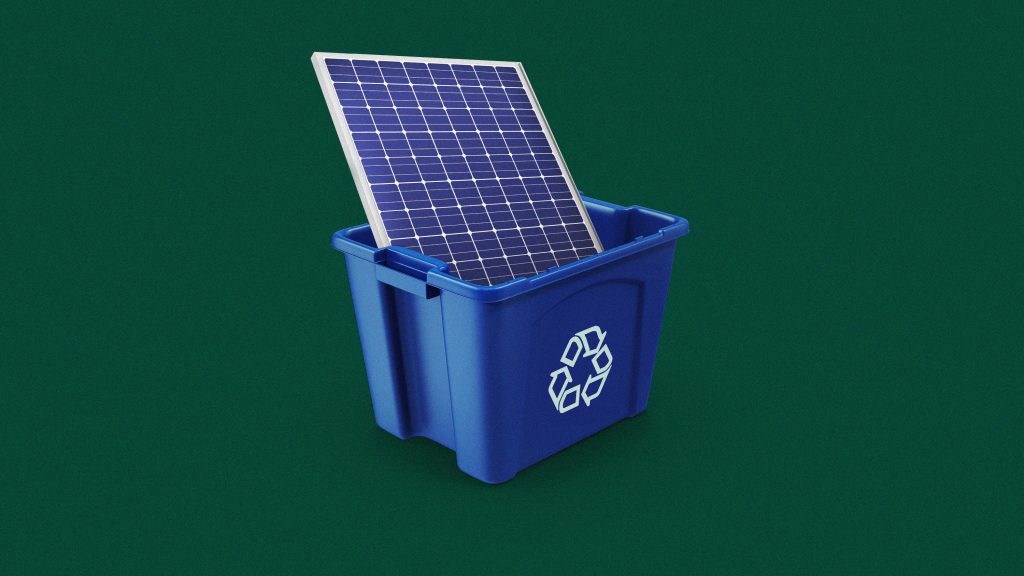
The Role of Manufacturers and Industry
Manufacturers and the solar power industry play a crucial role in the recycling process, as they are responsible for product design, production, and end-of-life management. Recognizing the importance of recycling and taking proactive measures can significantly impact the overall sustainability of solar power systems.
Manufacturer responsibility in recycling
Manufacturers have a responsibility to design products with end-of-life management in mind. By incorporating recyclability and easy disassembly into the product design, manufacturers can facilitate the recycling process and reduce the costs associated with recycling. Additionally, manufacturers can collaborate with recycling facilities to ensure that the necessary infrastructure and processes are available to handle their products at the end of their life cycle.
Improvements in product design for recyclability
Product design improvements are essential to enhance the recyclability of solar power system components. For example, designing solar panels with standardized sizes and connectors can simplify the disassembly process and improve the efficiency of recycling operations. Similarly, developing inverters and battery storage systems with modular designs and easily replaceable parts can extend product life and facilitate recycling.
Collaboration among industry stakeholders
Collaboration among manufacturers, recycling facilities, governments, and other industry stakeholders is crucial to drive advancements in solar power system recycling. Manufacturers can work with recycling facilities to develop efficient and cost-effective recycling processes. Governments can establish regulations and provide financial incentives to encourage recycling and support the development of recycling infrastructure. By working together, stakeholders can leverage each other’s expertise and resources to tackle the challenges associated with solar power system recycling effectively.
Government regulations and incentives
Government regulations and incentives also play a significant role in promoting solar power system recycling. Implementing regulations that mandate manufacturers to take responsibility for the end-of-life management of their products can motivate companies to develop more sustainable and recyclable solar power systems. Governments can also offer financial incentives or tax credits to manufacturers and consumers who support recycling efforts. These measures help create a favorable environment for recycling and encourage the adoption of sustainable practices within the solar power industry.
The collective efforts of manufacturers, industry stakeholders, and governments are crucial in promoting responsible end-of-life management and advancing the recycling of solar power systems. By working together and taking proactive measures, the solar power industry can lead the way towards a circular economy, where valuable resources are recovered, waste is minimized, and the environmental impact of solar power systems is significantly reduced.
Environmental Impact of Solar Power System Recycling
The environmental impact of recycling solar power systems extends beyond waste reduction and resource preservation. Proper recycling of these systems offers several key environmental benefits, including the reduction of carbon emissions, conservation of resources, prevention of toxic waste, and ecological restoration.
Reduction in carbon emissions
Solar power is widely recognized as a clean and renewable energy source that can significantly reduce greenhouse gas emissions. However, the manufacturing and disposal processes associated with solar power systems do have carbon footprints. By recycling solar power systems, the need for new production is reduced, resulting in lower carbon emissions. Recycling also enables the recovery of materials that require significant energy inputs during the extraction and manufacturing stages, further reducing the environmental impact.
Conservation of resources
Solar power systems rely on various natural resources, such as metals, minerals, and rare earth elements. By recycling these systems, the need for extracting virgin resources is minimized. Recovering valuable materials from retired solar panels, inverters, and battery storage systems reduces the demand for raw materials, conserves natural resources, and helps maintain a sustainable supply chain for future solar power installations. Recycling also reduces the environmental impact associated with mining and processing raw materials.
Prevention of toxic waste
Improper disposal of solar power system components can lead to the release of hazardous substances into the environment. Solar panels, for instance, may contain heavy metals and other toxic materials that can contaminate soil, air, and water if not handled properly. By recycling these components, toxic waste can be safely managed and prevented from polluting the environment. Responsible recycling ensures that harmful substances are separated and disposed of appropriately, minimizing the risk to human health and the ecosystem.
Ecological benefits of recycling
The ecological benefits of solar power system recycling extend beyond waste reduction and resource conservation. Recycling can contribute to the restoration and protection of ecosystems affected by mining and extraction activities. By reducing the reliance on virgin resources and promoting the use of recycled materials, recycling supports biodiversity conservation and sustainable land use practices. Additionally, the responsible management of solar power system waste prevents the accumulation of non-biodegradable materials in landfills, reducing the overall environmental impact.
By considering the environmental impact of solar power system recycling and actively engaging in responsible waste management, we can contribute to the preservation of the planet’s ecosystems and the mitigation of climate change. Recycling plays a vital role in the transition towards a more sustainable and circular economy, where resources are conserved, pollution is minimized, and renewable energy sources are maximized.
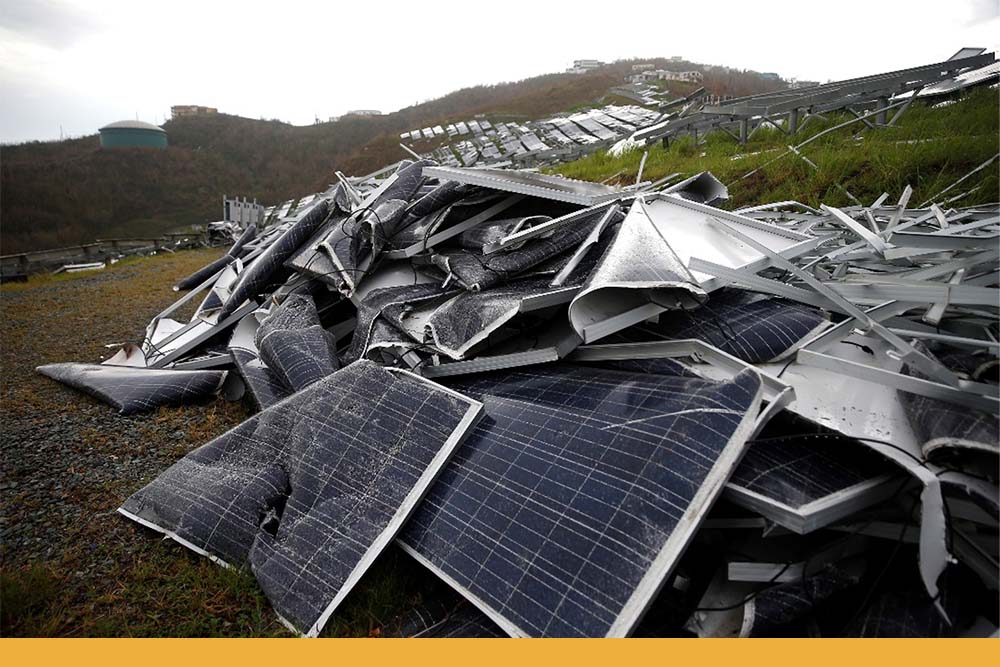
Future Innovations in Solar Power System Recycling
As the demand for renewable energy continues to grow, innovations in solar power system recycling are key to ensuring the long-term sustainability of the industry. Several advancements, ranging from materials research to recycling technologies, show promising potential for the future of solar power system recycling.
Advancements in solar panel materials
Research and development in solar panel materials are driving improvements in recyclability. For instance, scientists are exploring new materials and manufacturing processes that enhance the efficiency of solar cells while reducing the use of environmentally harmful substances. The development of “perovskite” solar cells, which have lower material and energy requirements compared to traditional silicon cells, holds promise for easier and more sustainable recycling.
Emerging recycling technologies
The development of innovative recycling technologies is essential to address the complexities of solar power system recycling effectively. Researchers and entrepreneurs are exploring various approaches, such as thermal processes, chemical treatments, and mechanical disassembly methods. These technologies aim to separate and recover materials more efficiently, reduce energy consumption during the recycling process, and improve the overall economics of recycling solar power systems.
Circular economy approach to solar power systems
Transitioning towards a circular economy approach can revolutionize the way solar power system components are manufactured, used, and recycled. A circular economy aims to maximize the value of products and materials by promoting reuse, repair, and recycling. Designing solar power systems with modular components, facilitating easy disassembly, and incorporating recycled materials into new production can significantly reduce waste and promote resource conservation.
Research and development in recycling methods
Investment in research and development is crucial to advance recycling methods for solar power systems. Scientists, engineers, and recycling experts continue to explore novel techniques, assess environmental implications, and refine existing processes. By focusing on the development of cost-effective and efficient recycling methods, the industry can unlock new possibilities for recovering valuable materials and minimizing waste.
The future of solar power system recycling holds exciting potential for more sustainable and efficient practices. Advances in materials, recycling technologies, and circular economy approaches can shape a future where solar power systems are recycled with ease, valuable resources are conserved, and the environmental impact of the solar industry is significantly reduced.
The Economic Viability of Solar Power System Recycling
While the environmental benefits of solar power system recycling are undeniable, it is important to consider the economic viability and potential financial incentives associated with recycling. By analyzing the costs and benefits of recycling, we can understand how recycling can contribute to job creation, economic growth, and financial sustainability.
Costs and benefits of recycling
Like any waste management process, recycling solar power systems incurs certain costs. These costs include collection, transportation, sorting, and processing expenses. However, it is crucial to consider the long-term benefits and reductions in environmental and social costs that recycling can provide. By extracting valuable materials, recycling can generate revenue and offset some of the initial costs associated with collecting and processing the waste. Additionally, reducing the need for virgin resource extraction through recycling can lower commodity prices and contribute to overall cost savings in the solar power industry.
Job creation and economic growth
The recycling industry, including solar power system recycling, has the potential to create significant job opportunities and contribute to economic growth. Recycling facilities require a skilled workforce to operate the equipment, sort and process materials, and manage logistics. The development of recycling infrastructure and the demand for recycled materials can spur job creation across different sectors, from manufacturing to research and development. The economic benefits associated with recycling can extend beyond the immediate waste management sector, providing opportunities for entrepreneurs, small businesses, and communities.
Recycling as a revenue stream
Recycling can be more than just a waste management practice – it can serve as a revenue stream for various stakeholders. Recycling facilities can generate revenue by recovering valuable materials from solar power systems and selling them to manufacturers or other industries. Manufacturers can benefit from a more sustainable and cost-effective supply chain by incorporating recycled materials into their production processes. Additionally, governments can explore revenue opportunities through taxes or fees associated with solar power system recycling. By tapping into the economic potential of recycling, stakeholders can create a more sustainable and financially viable industry.
Financial incentives for recycling
Governments can play a crucial role in promoting solar power system recycling by providing financial incentives and supportive policies. These incentives can include tax credits, grants, or subsidies for recycling facilities and manufacturers. By incentivizing recycling, governments can drive the development of recycling infrastructure, reduce costs associated with recycling, and encourage the adoption of sustainable practices. Financial incentives can also help level the playing field for recycling compared to other waste disposal methods, making recycling a more attractive option for stakeholders.
By analyzing the economic viability and potential financial incentives associated with solar power system recycling, we can highlight the significant opportunities that recycling offers. Recycling has the potential to contribute to economic growth, job creation, and the development of a sustainable and circular economy. By recognizing the economic benefits, stakeholders can drive investments, support legislation, and further improve the financial sustainability of solar power system recycling.
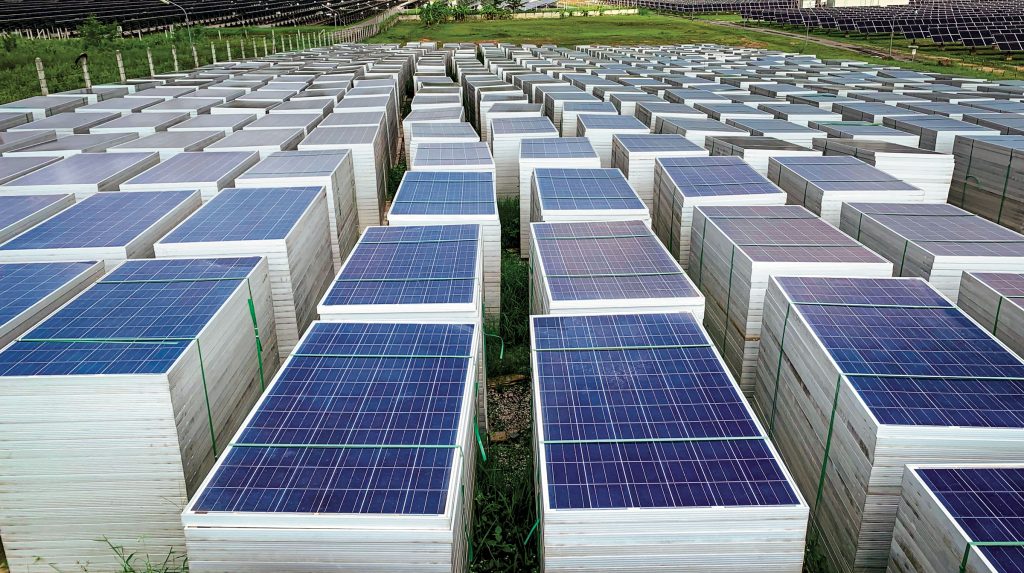
Best Practices for Solar Power System Recycling
To ensure effective and responsible recycling of solar power systems, individuals, businesses, and governments should consider implementing best practices. These best practices cover areas such as finding certified recyclers, proper dismantling and collection methods, transportation and logistics considerations, ensuring data privacy and security, and promoting consumer awareness and education.
Finding certified recyclers
Collaborating with certified recyclers is essential to ensure that solar power systems are recycled responsibly and in accordance with environmental regulations. Certification programs such as the Recycling Industry Operating Standard (RIOS) and the Responsible Recycling (R2) standard help identify recyclers that meet the industry’s best practices. Working with certified recyclers ensures proper handling, processing, and disposal of solar power system waste, minimizing environmental impact.
Proper dismantling and collection methods
Proper dismantling and collection methods are critical for efficient recycling. Solar power system components should be disassembled in a manner that facilitates material separation and minimizes damage to valuable parts. Collecting components separately based on their recycling requirements improves the overall recycling efficiency and reduces contamination risks. Following manufacturer or industry guidelines on dismantling and collecting solar power systems helps ensure the highest possible recovery rates.
Transportation and logistics considerations
Transportation and logistics considerations are crucial to minimize the environmental impact of recycling. Reducing transportation distances and optimizing routes can reduce greenhouse gas emissions associated with waste transportation. Coordinating logistics with other organizations or recycling facilities can help optimize transportation resources and reduce costs. Utilizing efficient packaging and transport methods can also minimize the risk of damage during transit, maximizing the recovery potential of recycled materials.
Ensuring data privacy and security
Data privacy and security should be prioritized when recycling solar power systems, particularly those used in commercial or residential settings. Proper data wiping or destruction protocols should be followed to protect sensitive information stored in inverters, battery storage systems, or other components. Collaborating with certified recyclers that have data destruction capabilities can help ensure that personal or confidential data remains secure throughout the recycling process.
Promoting consumer awareness and education
Promoting consumer awareness and education is vital to encourage responsible end-of-life management of solar power systems. Individuals and businesses should be educated about the importance of recycling, the available recycling options, and the potential environmental benefits. By understanding the recycling process and their role in it, consumers can make informed decisions and actively participate in sustainable waste management. Governments, manufacturers, and industry organizations can play a pivotal role in promoting consumer awareness through campaigns, incentives, and educational initiatives.
By adopting and promoting these best practices, stakeholders can enhance the efficiency and effectiveness of solar power system recycling. Collaboration between consumers, recyclers, manufacturers, and governments plays a crucial role in ensuring responsible end-of-life management and the long-term sustainability of the solar power industry.
Conclusion
Solar power systems have gained significant popularity due to their ability to harness clean and renewable energy. As the industry continues to grow, it is crucial to address the environmental impact of solar power system waste and promote responsible recycling methods. Understanding the different components of solar power systems, the challenges in recycling, the current state of recycling initiatives and programs, and the role of manufacturers and industry is essential in developing effective recycling practices. Additionally, considering the economic viability and promoting best practices for recycling can contribute to job creation, economic growth, and a more sustainable future. By investing in research and development, promoting collaboration, and educating consumers, the solar power industry can ensure responsible waste management and contribute to a circular economy. By taking action today, we can pave the way for a sustainable and clean energy future for generations to come.

